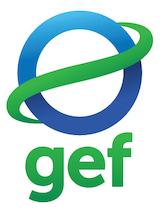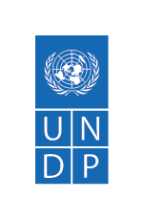Identification and Implementation of Adaptation Response Measures in the Drini-Mati River Deltas
The Drini and Mati River Deltas in Albania are experiencing stressful impacts on biodiversity and ecosystems as a result of climate change. There is currently a lack of institutional and individual capacities to undertake a rigorous assessment or to address the potential climate change impacts on biodiversity.
The aim of this project was to address key risks and vulnerabilities in the coastal areas of Drini Mati River Deltas of the Northern Adriatic by developing the capacity to adapt to climate change.
For updates on UNDP Early Warning Systems and Climate Resilient Development projects, click here.
Project details
Levels of intervention
- Municipality
Source of funds
- Global Environment Facility - Strategic Priority on Adaptation
Key implementers
- National Governments
Funding amounts
Government of Albania: $140,000; Government of Albania (parallel): $740,000; Regional Environmental Centre (parallel); $44,500
Project partners
- Ministry of Environment, Forestry & Water Administration - Albania
- Institute of Hydrometeorology - Albania
- Regional Environmental Center - Albania
- United Nations Development Programme (UNDP)
- Global Environment Facility (GEF)
Introduction
The Drini and Mati River Deltas in Albania are experiencing stressful impacts on biodiversity and ecosystems as a result of climate change. There is currently a lack of institutional and individual capacities to undertake a rigorous assessment or to address the potential climate change impacts on biodiversity.
The aim of this project was to address key risks and vulnerabilities in the coastal areas of Drini Mati River Deltas of the Northern Adriatic by developing the capacity to adapt to climate change.
For updates on UNDP Early Warning Systems and Climate Resilient Development projects, click here.




Project details
The Drini and Mati River Deltas (DMRD) are two of the three deltas on the northern Adriatic coast of Albania. DRMD represents a
complex and compound system of sandy belts, capes, bays, lagoons and island areas. They also harbour significant biodiversity
values in three types of habitats: marine, wetlands and non‐wetland habitats, including forests, shrubs, and open fields where
traditional agriculture is practiced. Biodiversity is one of the most important assets of Lezha region, in which DMRD lies. The Drini
Delta is an internationally recognized Important Bird Area, providing wintering grounds for the endangered pygmy cormorant and
over 70 other species of waterfowl and water birds. The Patok lagoon, within the Mati Delta, serves as an important feeding area for
globally endangered loggerhead turtles.
Climate change has the potential to undermine biodiversity conservation efforts in the DRMD’s protected areas, unless the system
accommodates uncertainty and management strategies are put in place to respond to climate‐related stress. According to Albania’s
first comprehensive vulnerability and adaptation assessment, conducted as part of the preparation of the First National
Communication (FNC), the DMRD is critically vulnerable to climate change and requires adaptation measures to be put in place.
Scenarios for Albania predict an annual increase in temperature of up to 3.6ºC, a decrease in precipitation of 12.5%, and
consequent reductions of water resources and arable land (due to soil erosion and alteration) by the year 2100. In the coastal
zones, an increase in sea surface temperature as well as sea level rise (SLR) of up to 61 centimetres is expected to place additional
stress on marine and littoral biodiversity as well as livelihoods of local communities. SLR, more frequent and intense floods,
frequent inundation, and submersion of low lying coastal areas could affect life cycles of various species and result in habitat loss
and fragmentation. Rising temperatures will also affect the composition and distribution of DRMD’s marine and terrestrial species.
- Municipality
- National Governments
- Ministry of Environment, Forestry & Water Administration - Albania
- Institute of Hydrometeorology - Albania
- Regional Environmental Center - Albania
- United Nations Development Programme (UNDP)
- Global Environment Facility (GEF)
Government of Albania: $140,000; Government of Albania (parallel): $740,000; Regional Environmental Centre (parallel); $44,500
News
Key results and output
The overall development goal of this medium size project is to assist Albania in establishing a mechanism by which strategies to moderate, cope with, and take advantage of the consequences of climate change are enhanced, developed, and implemented. The specific objective of the project is to build adaptive capacities in the DMRD to ensure resilience of the key ecosystems and local livelihoods to climate change. This will be done by first identifying, and then integrating climate change response measures into development programming in the DMRD.
This objective will be achieved through the following outcomes:
Outcome 1: Capacities to monitor and respond to anticipated climate change impacts in the DMRD at the institutional and community levels developed
- Output 1.1: A system for monitoring climate change and its impacts on the DMRD ecosystem is in place
- Output 1.2: Local government institutions have the capacity to analyze data on climate variability and associated ecological impacts and integrate this into decision making
- Output 1.3: Community capacities to understand the impacts of climate fluctuations and expected changes on natural ecosystems and local livelihoods are developed
Outcome 2: DMRD region’s conservation and development programmes, plans and policies integrate climate change risks and take local pilot actions for coastal adaptation
- Output 2.1 A package of amendments to biodiversity conservation activities within protected areas of the DMRD aimed at integrating adaptation measures is prepared and implementation is initiated
- Output 2.2 A package of amendments to sustainable development activities in the wider landscape surrounding protected areas in the DMRD aimed at integrating adaptation measures is prepared and implementation is initiated
Outcome 3: Capacity for adaptive management, monitoring and evaluation, learning, and replication of project lessons developed.
- Output 3.1: System for monitoring and evaluation of project impacts established
Reports & publications
Videos & multimedia
Newsfeed
Contacts
- UNDPElvita KabashiCountry Office Focal Point
- UNDPEglantina BruciProject Manager
